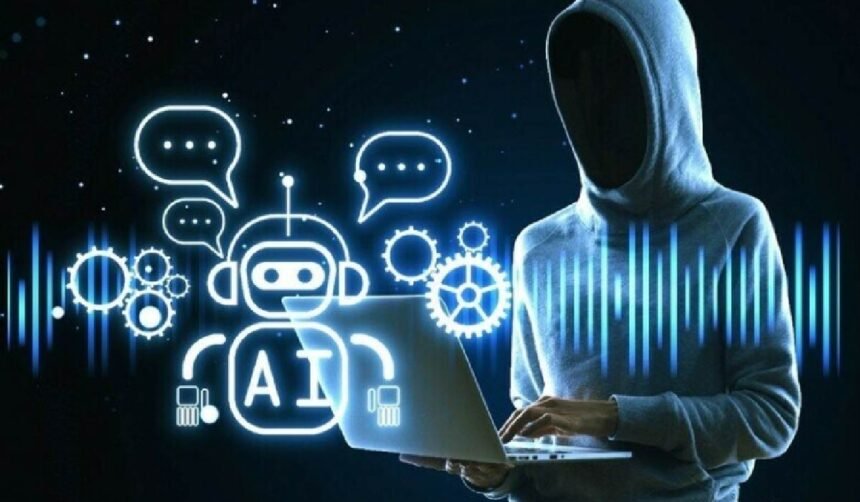In the age of artificial intelligence, cybersecurity experts are confronting an alarming new reality: the same technologies driving innovation are also empowering cybercriminals. AI, once hailed as a force for progress, has now become a double-edged sword.
Nowhere is this shift more evident than in the world of cyber warfare, where AI is being used to automate, accelerate, and amplify the scale of online attacks. Distributed Denial of Service (DDoS) campaigns — already notorious for crippling websites and networks — are evolving into something far more dangerous: intelligent, adaptive, and nearly impossible to predict.
As our world grows increasingly connected, the question isn’t whether AI-driven attacks will happen — it’s how prepared we’ll be when they do.
The Old Model of DDoS: A Blunt Instrument
Traditional DDoS attacks have always relied on brute force. Hackers would flood a server or network with overwhelming traffic, rendering systems unavailable to legitimate users. These attacks, while powerful, were relatively unsophisticated — relying on volume rather than precision.
Over time, defenders became better equipped. Firewalls, intrusion prevention systems, and specialized filtering tools began identifying and blocking malicious traffic patterns. Businesses learned to absorb and mitigate these assaults, turning what was once a nightmare into a manageable nuisance.
But AI has changed the rules of engagement.
Enter AI: From Chaos to Coordination
In the hands of attackers, AI transforms DDoS campaigns from chaotic floods into coordinated strikes. Instead of blindly overwhelming systems, AI-driven attacks can now learn in real time. They analyze a target’s defenses, adapt to filtering mechanisms, and shift tactics mid-attack.
Think of it as the difference between a stampede and a swarm of drones — both are destructive, but one is controlled and strategic.
AI-powered botnets can dynamically reroute their traffic, alter packet structures, or change attack vectors on the fly to avoid detection. This agility makes them far more resilient than traditional DDoS assaults, which often collapse once defenders identify the traffic source.
When Connectivity Becomes a Weapon
The foundation of our modern world — from smart cities to healthcare systems — depends on uninterrupted connectivity. But this dependency also creates an enormous attack surface.
With billions of devices connected through the Internet of Things (IoT), each one becomes a potential weapon in a coordinated attack. Refrigerators, security cameras, and even lightbulbs can be hijacked and turned into digital soldiers.
AI takes this exploitation to the next level by identifying vulnerable devices automatically. It can scan vast sections of the internet, detect weak endpoints, and recruit them into botnets faster than any human hacker could.
This creates a new kind of digital ecosystem — one where compromised machines operate with machine-like precision, directed by algorithms designed to evade and overwhelm.
The Rise of Adaptive Cyber Warfare
Unlike static attacks, AI-driven assaults can adjust based on the response of the target. If a server filters out one kind of traffic, the AI immediately switches tactics, launching a different vector. If a company’s bandwidth is reinforced, it might pivot to targeting application layers instead.
In essence, the attack becomes self-learning.
This adaptive behavior makes containment far more difficult. It also blurs the line between offensive and defensive AI, as cybersecurity systems must now learn faster than the attackers’ algorithms. The digital battlefield has shifted from human expertise to machine intelligence — where milliseconds determine victory or defeat.
Experts believe we’re entering an era of “algorithmic warfare” in cybersecurity. On one side are the attackers’ machine-learning models, analyzing vulnerabilities and deploying automated strikes. On the other are defenders’ AI systems, identifying anomalies, blocking patterns, and predicting attacks before they unfold.
The result is an arms race where algorithms, not people, decide who wins.
The Economics of an Attack
AI isn’t just making attacks smarter — it’s making them cheaper.
In the past, large-scale DDoS attacks required significant resources: infrastructure, bandwidth, and time. But with AI automating the process, attackers can now deploy smaller, more efficient botnets that achieve the same results with fewer resources.
This democratization of cyber offense means that even small-time hackers can unleash devastating disruptions. The “barrier to entry” has dropped dramatically, creating an environment where nearly anyone with minimal coding knowledge and access to AI tools can cause real harm.
The Global Ripple Effect
Cyberattacks are no longer isolated events; they are ripple effects in a globally connected system. A DDoS strike on one region can slow down or destabilize infrastructure halfway across the world.
Consider how dependent industries have become on cloud computing and shared networks. A disruption to a major cloud provider can cascade across sectors — halting logistics, freezing e-commerce, and interrupting healthcare data transfers.
In this context, AI-fueled attacks aren’t just a cybersecurity issue; they’re an economic and societal threat. The more interconnected we become, the more a single breach can paralyze entire ecosystems.
Defensive AI: Fighting Fire With Fire
Fortunately, the same technology that empowers attackers also empowers defenders.
AI-driven defense systems are revolutionizing how organizations detect and respond to attacks. By analyzing billions of data packets in real time, these systems can distinguish between legitimate and malicious traffic with far greater accuracy than human analysts.
Machine learning models can also predict the early signs of a coordinated assault — unusual spikes, pattern anomalies, or suspicious routing behavior — and deploy countermeasures autonomously.
Moreover, AI systems are now being trained to simulate potential types of DDoS attacks, allowing security teams to prepare defense strategies proactively rather than reactively. This predictive capability marks a turning point in cybersecurity — transforming defense from a passive shield into an active, learning organism.
Collaboration Over Competition
As the digital landscape evolves, collaboration will be key. Governments, private companies, and security researchers must share intelligence about attack patterns and vulnerabilities. No single organization can defend against the scale of AI-driven threats alone.
Global initiatives focused on cybersecurity resilience — like threat intelligence exchanges and cooperative defense frameworks — are essential to building collective immunity. Just as epidemiologists track viral outbreaks, cybersecurity experts must monitor and contain digital contagions before they spread.
The Future: AI Ethics Meets Cyber Warfare
The rise of AI-driven cyberattacks also raises profound ethical questions. Should AI research be restricted to prevent weaponization? Can open-source models be both transparent and secure? And how do we balance innovation with safety in an era where every advancement carries potential for misuse?
These aren’t just technical concerns — they’re moral imperatives. As AI continues to reshape every industry, its governance will determine whether it becomes humanity’s most powerful ally or its most unpredictable adversary.
Conclusion: When Intelligence Turns Against Its Creator
AI’s integration into cyber warfare marks a defining moment in the evolution of technology. What was once a tool for progress is now being reprogrammed as an instrument of disruption.
But history shows that every new weapon also drives new defenses. The challenge isn’t to fear AI but to master it — to ensure that innovation strengthens protection faster than it empowers destruction.
In the coming years, resilience will no longer mean building walls; it will mean building intelligence — systems that can anticipate, adapt, and evolve as fast as the threats themselves.
Because in a world where connectivity defines survival, the battle for the internet’s future won’t be fought by humans alone — it will be fought, and perhaps decided, by machines.







